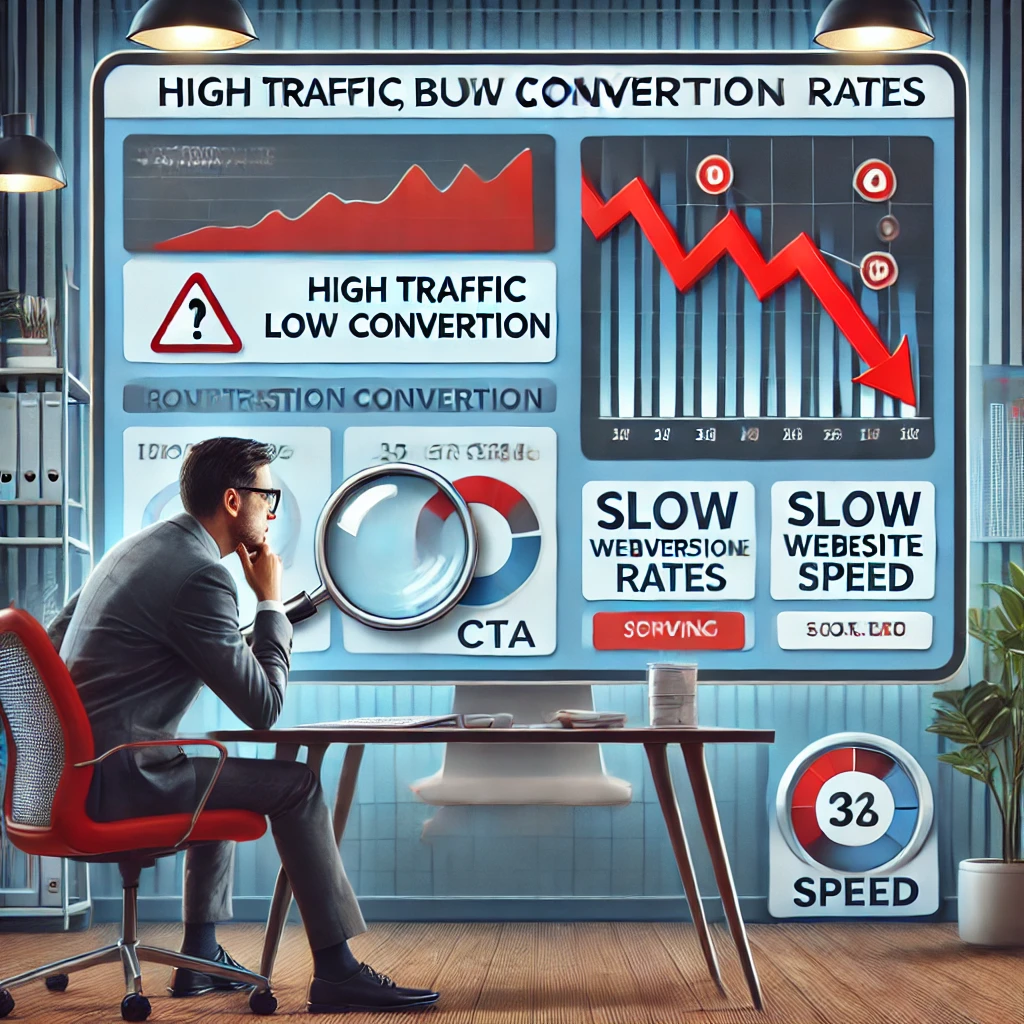
If your website isn’t converting visitors into customers, you’re not alone. Many business owners invest in building an online presence only to see disappointing results. The misconception about Digital Marketing that simply having a website guarantees success is one of the biggest pitfalls. In reality, a website must be strategically optimized to turn visitors into paying customers.
Why Website Conversions Matter
A website that doesn’t convert is a financial drain. Even if your site attracts thousands of visitors, it’s ineffective without conversions. Conversion rate optimization (CRO) ensures that your website isn’t just a passive digital brochure but an active sales machine.
The Cost of a Non-Converting Website
- Wasted Traffic: High traffic numbers mean nothing without conversions.
- Lost Revenue: Missed leads translate to lost sales opportunities.
- Ineffective Marketing Spend: Running ads and campaigns to drive traffic without CRO is a wasted investment.
The Biggest Digital Marketing Mistakes That Hurt Conversions
1. Poor User Experience (UX)
A frustrating website experience sends visitors away quickly. Common UX mistakes include:
- Slow Load Speeds: A 1-second delay can reduce conversions by 7%.
- Mobile Unfriendliness: Over 50% of traffic comes from mobile devices; a poor mobile design drives users away.
- Confusing Navigation: Visitors should find what they need within seconds.
Solution: Optimize page speed, simplify navigation, and prioritize mobile responsiveness.
2. Weak or Missing Call to Action (CTA)
A CTA guides visitors on what to do next, yet many websites fail in this area.
- Unclear Language: “Click Here” is too vague.
- Poor Placement: A CTA should be prominent and repeated strategically.
- Lack of Urgency: Adding words like “Limited Time Offer” can boost conversions.
Solution: Use compelling, action-oriented CTAs that stand out.
3. Prioritizing Design Over Functionality
While aesthetics matter, a stunning website that lacks usability will fail to convert.
- Too Many Animations: Can slow load speed and distract visitors.
- Hard-to-Read Fonts & Colors: Must be accessible and user-friendly.
- Overloaded Homepage: Simplicity is key to guiding visitors effectively.
Solution: Focus on intuitive design, fast load speeds, and clear user journeys.
4. Ineffective Content Strategy
Content must do more than exist—it should engage and persuade.
- Too Promotional: Focus on solving problems, not just selling.
- Lack of Value: Provide actionable insights and information.
- Ignoring SEO: Poor keyword usage means missing out on organic traffic.
Solution: Write clear, helpful content that speaks to your audience’s needs.
5. Not Leveraging Analytics
Many businesses fail to track and analyze their website’s performance.
- Ignoring Bounce Rates: A high bounce rate signals something is wrong.
- No A/B Testing: Without testing, you can’t optimize for better results.
- Focusing on Vanity Metrics: Traffic alone is meaningless without conversions.
Solution: Use tools like Google Analytics to track user behavior and improve accordingly.
6. Neglecting SEO Best Practices
SEO isn’t just for traffic; it ensures you attract the right audience.
- Weak Keyword Targeting: Targeting the wrong keywords leads to irrelevant visitors.
- Slow Page Speeds: Google ranks fast-loading sites higher.
- Lack of Internal Linking: Helps visitors navigate and improves rankings.
Solution: Optimize site speed, target relevant keywords, and build strong internal linking.
How to Transform Your Website Into a Conversion Powerhouse
1. Implement A/B Testing
A/B testing compares different versions of your pages to see what works best. Test:
- CTA placements
- Headline variations
- Image selections
Tools like Google Optimize or Optimizely can help streamline testing.
2. Create a User-Centric Design
User experience should be seamless and intuitive. Prioritize:
- Easy Navigation: Reduce friction in the user journey.
- Mobile Optimization: Over half of web traffic is mobile-based.
- Accessibility: Ensure all users, including those with disabilities, can navigate your site.
3. Improve Website Speed and Performance
A slow site kills conversions. Quick fixes:
- Compress images.
- Enable browser caching.
- Use a Content Delivery Network (CDN).
Tools like Google PageSpeed Insights can help identify slow areas.
4. Craft High-Converting Content
Effective content engages, educates, and converts. Best practices:
- Use clear, concise language.
- Address customer pain points.
- Include storytelling and case studies to build trust.
5. Use Social Proof to Build Trust
People trust other people. Showcasing:
- Customer testimonials
- Case studies
- Trust badges and certifications
Can reassure potential customers and increase conversions.
Frequently Asked Questions (FAQs)
Why is my website traffic high but conversions low?
Your site might have poor UX, unclear CTAs, or irrelevant content.
How often should I perform A/B testing on my website?
Regularly—especially when launching new pages or changing strategies.
What is the most common mistake business owners make with CTAs?
Using vague, weak CTAs that fail to guide visitors toward action.
How can I improve my website’s UX without a complete redesign?
Start with small improvements like better navigation, faster load times, and mobile-friendliness.
Is SEO still important if my website’s design is top-notch?
Absolutely. Without SEO, even the best-designed site won’t attract the right visitors.